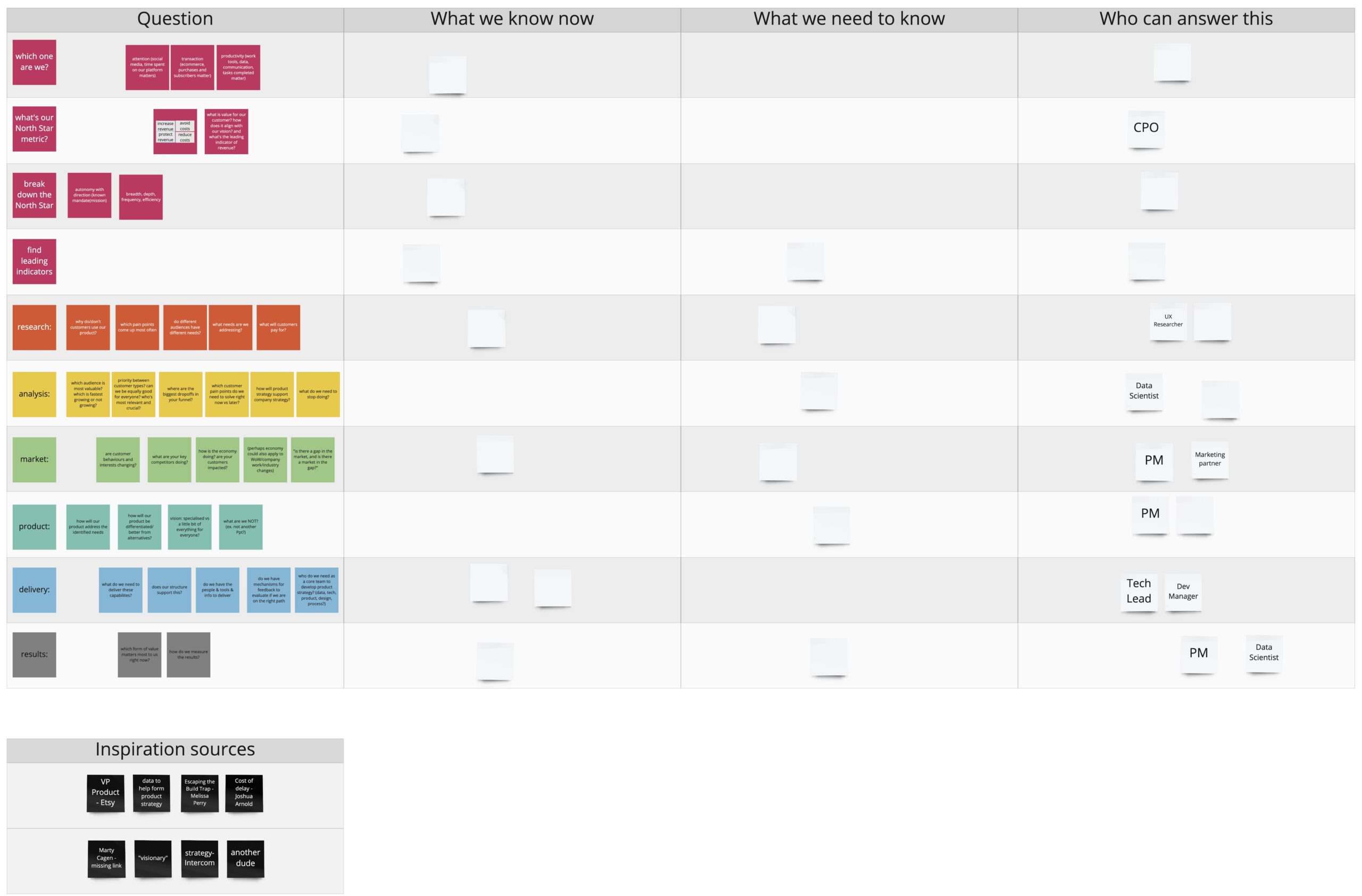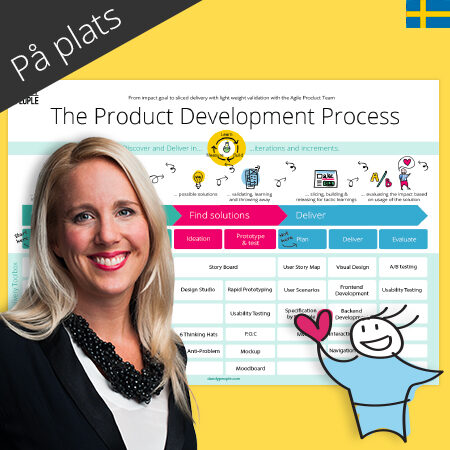
All product companies likely have a document titled Product Strategy, but do they have a real product strategy? Perhaps you’re in charge of the product strategy and want to test and strengthen it. Perhaps you’re a Product Manager feeling the consequences of a strategy that isn’t fulfilling its promise. Do you see any of these symptoms in your product company?
- Direct solutions coming from senior stakeholders, without space for product discovery
- Teams and stakeholders feeling the costs of context switching, working on very different initiatives, and spread thin
- Teams caught by surprises, needing to help other teams working on very different initiatives
- Senior product stakeholders unhappy with PM decisions closer to the work, even if the PMs are technically making decisions that fit within the strategy
- Slick presentations promising upcoming, unvalidated features, rather than focus on opportunities
Alignment is crucial. You can get alignment by directly reviewing decisions, Or, you can share the appropriate information and decision making framework so that others can make smart decisions without the direct oversight. To scale, product leaders can no longer rely on personally approving plans. A leader’s role is to enable their colleagues to make decisions themselves. Especially in the days of hybrid workspaces, it’s all about the flow of information. Your strategy plays a huge role in that information flow.
This is where your product strategy comes in! Strategy communicates product leaders’ expectations. It enables congruence between what company leaders want to achieve and what PMs need to prioritise to enable those changes. It is open enough so that PMs and product teams can explore autonomously and adjust their plan based on the insights they are closest to, but constrains them enough so they have guidance on where to focus. It protects teams from falling into “peanut buttering”: spreading themselves across too many initiatives instead of harnessing their energy into a few crucial bets.
How do you know if your product strategy is helping people to make astute product decisions? I watched a lot of product talks, so you don’t have to! Then I aggregated them into this table to evaluate strengths and gaps. No one is perfect, so you can look at whatever gaps exist, and prioritise the top ones that your PMs need to make sound product moves. Of course ambiguity is inevitable, but you can focus on minimising it where it counts.

Use this as a blueprint for your strategy if you’re just starting, or check your existing strategy’s health and enhance it. See what areas are weaker to shine a light on your own bias, so you can be sure to consider it. For traditional projects people, the customer perspective can be forgotten. For a data scientist or UX contributor, the high level company directives might be less present. The brilliant challenge for PMs is that they have to synthesise all these angles together, and bring thinking across levels into one cohesive view for their teams and stakeholders.
The good news: you don’t have to do this alone. In fact, it’s better to include and gather diverse skill sets to inform your position. Gather input from colleagues to see where they believe they contribute. Different roles will be better positioned to answer certain questions. This table can be the shared visual for you to get feedback on whether today’s product strategy is at the right level (not too high, not too low), doing its job for your organisation, and providing enough context to empower decisions without prescriptively constraining them.
You’re welcome to copy this Miro board, enhance it, and use it to identify the health of your product strategy. The next post to come: facilitating a shared understanding and prioritising which parts to tackle first.


